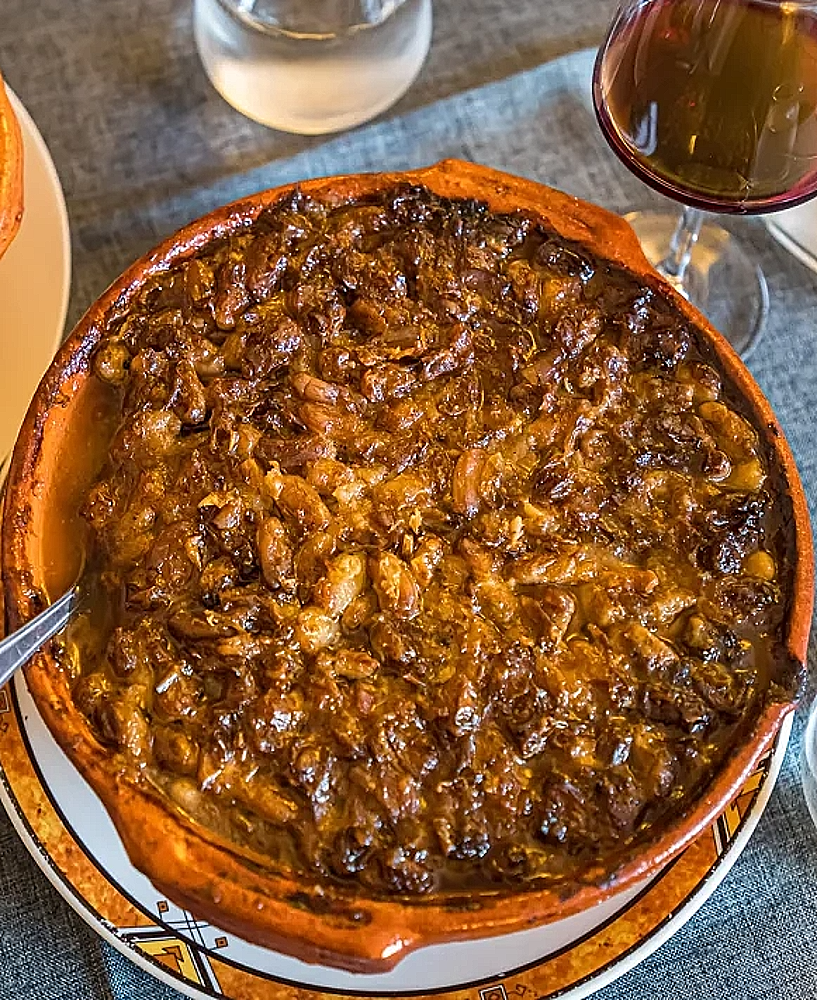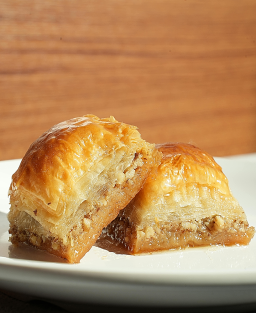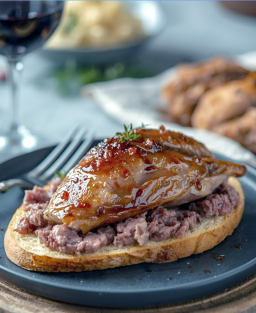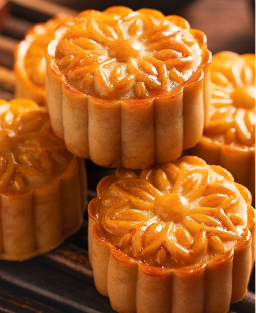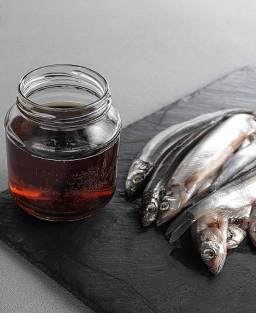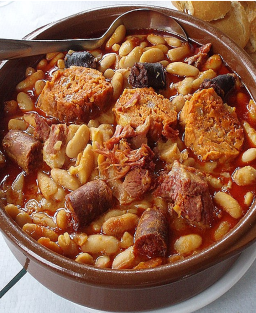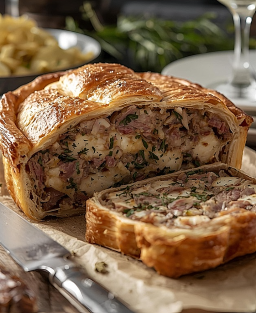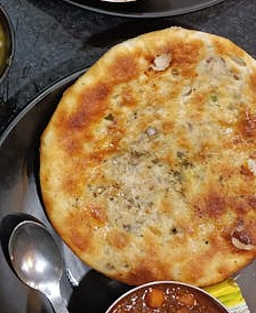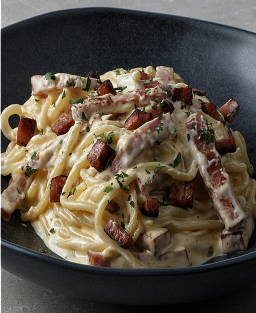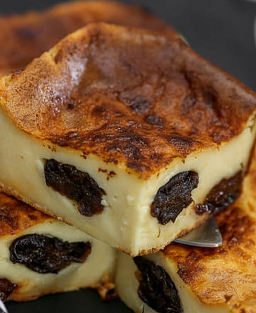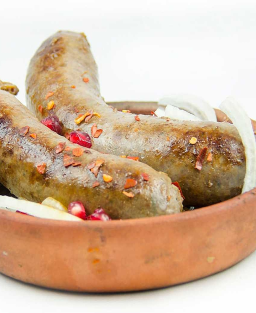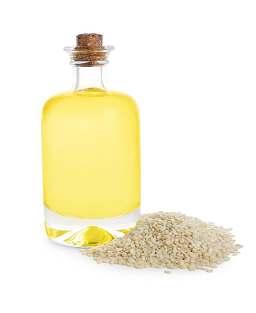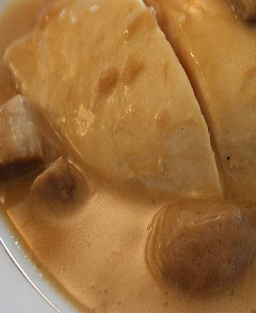Traditional Toulouse Cassoulet: Recipe from the Brotherhood, without tomato or breadcrumbs
Traditional Toulouse Cassoulet: Recipe from the Brotherhood, without tomato or breadcrumbs, slow cooking for tender beans and melting meats
Discover the traditional recipe for Toulouse Cassoulet, an emblematic dish of the Southwest, rich in white beans and slow-cooked meats. Traditionally prepared without tomato or breadcrumbs.
Anecdote
« Era antigament, los tolosencs disián qu’o cassolhar » — in the Occitan dialect of Toulouse, “cassolhar” meant to prepare a rich and convivial dish.
Legend
Traditionally, each Toulouse family had its own way of arranging the cassoulet in the cassole, giving rise to legendary versions that competed in flavor.
Required utensils
Large pot, Dutch oven or deep ovenproof dish (earthenware cassole), chef’s knives, cutting board, skimmer, colander, wooden spoons.
Country / Region
-
Country: France
-
Region: Occitania (Toulouse and surrounding area)
Recipe inventor: Oral transmission
Codified recipe: Yes
Historical Background
Cassoulet is an ancestral dish from the Occitan land, deeply rooted in the peasant traditions of Southwest France. Among its great variants, the Castelnaudary cassoulet, often considered the historical cradle, coexists with the Toulouse and Carcassonne versions, each bearing the distinctive marks of its terroir.
On April 7, 2022, Guy Pressenda played a central role in the creation of the Brotherhood of the Toulouse Cassoulet, launched at the restaurant Chez Moustache in Beauzelle. He became president, while chef André Audouy, known as “Moustache,” was named Grand Master, and Sophie Conquet, head of works at the Renée Bonnet vocational school, was designated Grand Mistress.
This initiative aimed to give Toulouse official recognition for its cassoulet, distinct from those of Castelnaudary and Carcassonne. The Brotherhood emphasizes emblematic ingredients: lingot beans from the Lauragais, duck confit, Toulouse sausage, pork belly, carrots, onions, and Cadours purple garlic.
To justify their attachment to this version, the Brotherhood cites the adage of the great chef Prosper Montagné:
“Castelnaudary is the father, Carcassonne the son, and Toulouse the Holy Spirit.”
Codified Principles of Cassoulet (Brotherhood / Tradition)
-
Use of the cassole (earthenware dish)
-
White lingot beans from the Lauragais, soaked then blanched
-
Mandatory meats: duck confit, Toulouse sausage, pork (knuckle, belly, rind)
-
Assembly in successive layers of meats and beans
-
Upper crust: “breaking the crust” several times
-
Slow cooking at moderate heat
-
Bubbling service, directly in the cassole
Emblematic Chefs and Contributions
-
André Audouy (Moustache): Grand Master of the Toulouse Cassoulet Brotherhood, emblematic local figure.
-
André Daguin (1935–2019): Ambassador of cassoulet and the Southwest, national popularizer.
-
Philippe Garcia (La Cave au Cassoulet, Toulouse): Local institution, renowned for slow-cooked cassoulet.
-
Émile Broussol (Le Colombier, Toulouse): Defender of cassole service and traditional cooking.
-
Jean-Luc Molle (Brotherhood of the Toulouse Cassoulet): Advocate for the standards of Toulouse cassoulet.
-
Michel Bras: Philosophy of sublimated terroir, rustic inspiration.
Recipe Description
Toulouse cassoulet: a rustic and generous dish, slow oven cooking for tender beans and confit meats. The golden crust on top, “broken” and reformed, is a sign of quality.
Ingredients
-
Dried white beans
-
Duck fat
-
Duck confit
-
Toulouse sausage
-
Split pig’s trotters
-
Ham bones
-
Farm-raised pork ribs
-
Onions, carrots, leek, celery
-
Garlic, bouquet garni
-
Salt and pepper
Preparation
Preparing the White Beans
Preliminary Steps
-
Rinsing
Rinse the dried beans thoroughly under cold water to remove dust and impurities. -
Soaking (24 hours)
-
Soak the beans in a large volume of cold water for 24 hours.
-
This soaking starts rehydration, natural germination, and helps eliminate some indigestible compounds.
-
-
Blanching
-
Drain the soaked beans.
-
Place them in a large pot with clean, cold water.
-
Bring to a gentle boil, simmer for 5 to 10 minutes.
-
Drain and discard the water.
-
Rinse again if desired.
-
Benefits of Blanching
-
Reduces flatulence: partial elimination of oligosaccharides.
-
Removes toxins and impurities: antinutrients, dust, residues.
-
Improves texture: more even cooking, supple skins.
Tips
-
Do not salt soaking or blanching water.
-
Blanching is recommended for rich dishes like cassoulet.
Preparation of the Stock
-
In a large pot, sweat onions, carrots, leek, and celery in duck fat.
-
Add ham bones and pork rind.
-
Add garlic and bouquet garni.
-
Cover with cold water, bring to a boil, skim.
-
Simmer gently for several hours to obtain a rich, fragrant stock.
Long Cooking of Pig’s Trotters
-
Add split pig’s trotters to the stock.
-
Simmer gently until gelatin and flavors enrich the liquid.
-
Remove the trotters once cooked; they may be added back in later.
Preparation of the Ham
-
Blanch ham bones or pork rind separately if necessary.
-
Add them to the stock for depth of flavor.
Preparation of the Meats
-
Duck confit: Brown lightly in its fat.
-
Toulouse sausage: Brown in a pan without pricking.
-
Pork ribs: Brown until nicely colored.
Assembly in the Cassole
-
Place a layer of pork rind at the bottom.
-
Add a layer of beans, then meats, alternating.
-
Finish with a layer of beans on top.
-
Moisten with stock.
-
Cook gently in the oven at low heat (150–160 °C / 300–320 °F) for several hours.
The Crust
-
During cooking, a golden crust forms on the surface.
-
Tradition dictates “breaking” the crust with a spoon 3 to 7 times, then reforming it with juices.
Variants and Notes
-
The Castelnaudary version emphasizes pork.
-
The Carcassonne version may include partridge or mutton.
-
The Toulouse version highlights duck confit and sausage.
Serving
-
Serve bubbling, directly in the cassole, family-style.
-
Traditionally accompanied by robust red wines.
Suggested Wines
-
France: Cahors, Madiran, or Minervois.
-
Spain: Ribera del Duero.
-
Italy: Chianti Classico.
Nutritional Facts (Approximate)
-
Calories: High (beans, duck, pork)
-
Proteins: Significant (beans + meats)
-
Fats: High (duck confit, pork)
-
Carbohydrates: Moderate (beans, vegetables)
Glossary
-
Cassole: Traditional earthenware dish from Issel near Castelnaudary.
-
Lingot beans: White beans, long and tender, cultivated in the Lauragais.
-
Duck confit: Duck legs preserved in their own fat.
-
Toulouse sausage: Fresh pork sausage, coarsely ground, unsmoked.
-
Bouquet garni: Bundle of aromatic herbs, typically thyme, bay, parsley.







